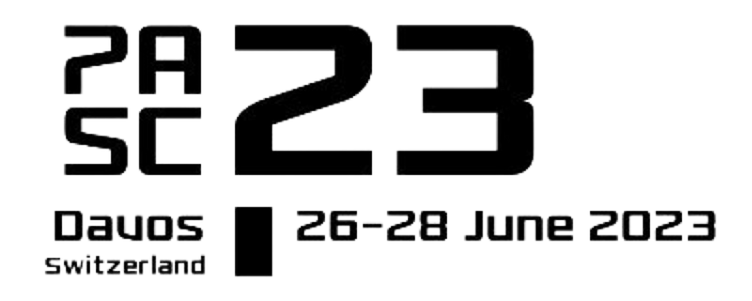Presentation
Graph Contractions for Calculating Correlation Functions in Lattice QCD
Presenter
DescriptionComputing correlation functions for many-particle systems in Lattice QCD is vital to extract nuclear physics observables like the energy spectrum of hadrons such as protons. However, this type of calculation has long been considered to be very challenging because of the complex nature of a hadron composed of quarks with many degrees of freedom. In particular, a correlation function can be calculated through a sum of all possible pairs of quark contractions dictated by Wick's theorem. Because the number of terms of this sum can be very large for any hadronic system of interest, fast evaluation of the sum faces several challenges: an extremely large number of contractions, a huge memory footprint, and the speed of contractions. In this paper, we present a Lattice QCD analysis software suite, Redstar, which addresses these challenges by utilizing novel algorithmic and software engineering methods targeting modern computing platforms such as many-core CPUs and GPUs. In particular, Redstar represents every term in the sum of a correlation function by a graph, applies efficient graph algorithms to reduce the number of contractions, to lower the cost of the computations, and to minimize the total memory footprint. Moreover, Redstar carries out the contractions on either CPUs or GPUs utilizing an internal and highly efficient Hadron contraction library. Specifically, we illustrate some important algorithmic optimizations of Redstar, show key design features of Hadron library, and present the speedup values due to the optimizations along with performance figures for calculating six correlations functions on four computing platforms.
TimeMonday, June 2612:30 - 13:00 CEST
LocationFlüela
SessionAP1B - ACM Papers Session 1B
Event Type
Paper
Physics




